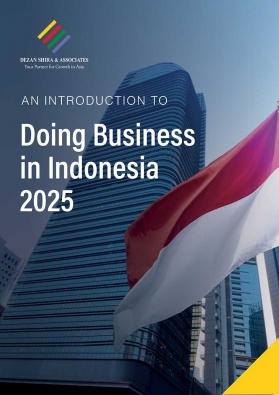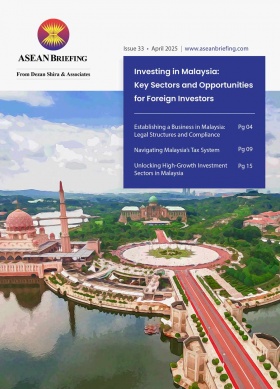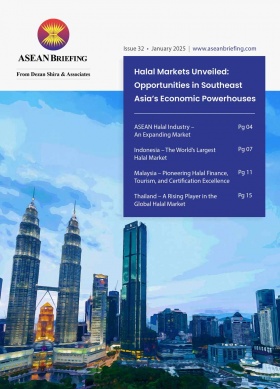Manufacturing in Cambodia: Moving Beyond Garments to Electronics and Automotive Parts
Cambodia has emerged as a leading low-cost manufacturing hub in Southeast Asia, with the garment sector serving as the cornerstone of its export-oriented industrialization. For more than two decades, preferential trade agreements with the United States and the European Union have enabled Cambodian apparel manufacturers to capture market share by offering cost-competitive labor and duty-free access. As a result, garment exports now account for more than 70 percent of total merchandise shipments, employing over one million workers and contributing roughly 15 percent of GDP.
Yet the very factors that fueled this growth, such as low wages, tariff preferences, and a young workforce, are no longer sufficient for long-term industrial resilience. Labor costs are gradually rising, while international buyers are diversifying their sourcing bases. Cambodia has responded by actively pursuing a more diversified manufacturing base through industrial upgrading, regional trade integration, and targeted incentives aimed at higher-value sectors.
Why diversification is essential
The global shift in manufacturing priorities — fueled by automation, ESG requirements, and evolving trade dynamics — means that over-reliance on a single sector exposes Cambodia to substantial risk. The partial suspension of the EU’s Everything but Arms (EBA) benefits in August 2020 has had a lasting impact on key Cambodian exports, particularly garments, footwear, and travel goods.
As of June 2025, this partial withdrawal remains in effect. Approximately 20 percent of Cambodia’s exports to the EU are now subject to standard most-favored-nation (MFN) tariffs, while the remaining 80 percent still enjoy duty-free access. The loss of preferences in core sectors has undermined Cambodia’s competitiveness in the European market and underscored the vulnerability of its garment-dependent export base.Although the EU has expressed willingness to restore full access upon improvements in labor rights and civil liberties, Cambodia remains under enhanced engagement monitoring. This ongoing policy uncertainty reinforces the need to diversify into more resilient, higher-value industries that are less exposed to external political pressure.
Emerging manufacturing sectors
Cambodia is steadily expanding its manufacturing capabilities beyond garments, targeting seven higher-value sectors: electronics, automotive parts, electrical equipment, pharmaceuticals, rubber and plastics, furniture, and agro-processing. These industries are gaining traction through a combination of foreign direct investment, regional trade agreements, and proactive government support via special economic zones (SEZs) and industrial policy frameworks.
Electronics and semiconductor assembly
Cambodia’s electronics industry has undergone remarkable growth over the past decade. Exports of electronic components climbed from minimal levels in 2015 to over US$900 million by 2019, reflecting a compound annual growth rate of around 24 percent. In 2023, electrical and electronic equipment (E&E) exports were valued at US$730 million, accounting for nearly 14 percent of Cambodia’s total exports.
The sector has drawn over US$450 million in FDI since 2011, with 79 Qualified Investment Projects (QIPs) approved as of 2022. Most of these projects focus on component assembly, particularly wire harnesses, semiconductors, and small motors. Japanese “Thailand-plus-one” investors have led the charge, with Chinese manufacturers following suit. By 2025, the number of E&E-related QIPs is expected to exceed 100.
Most facilities operate in SEZs such as Phnom Penh, Bavet, and Sihanoukville, strategically located to supply downstream factories in Vietnam and Thailand. Over 85 percent of E&E investment supports component assembly for regional value chains. As of 2020, the sector directly employed around 54,000 workers, nearly half of whom were women. However, domestic supply capabilities remain limited, as most intermediate components are still imported, highlighting the need for deeper upstream integration
Automotive parts and components
Cambodia’s auto parts sector remains in an early growth phase, but it is attracting increasing interest from global buyers. From October 2023 to September 2024, Cambodia recorded 36 automotive parts export shipments, an increase of 43 percent year-on-year. These exports were directed entirely to Peru, India, and Colombia, with Peru alone accounting for 60 percent of the total.
The government has set ambitious goals through its “Automotive & Electronics Roadmap,” targeting US$500 million in exports by 2027 and the creation of 10,000 jobs. Supporting this effort is the presence of vehicle assembly plants like Ford’s US$21 million facility in Pursat and Toyota’s plant in Phnom Penh (opened in 2024), both of which are expected to drive domestic demand for wire harnesses, brake systems, and other components.
Cambodia has also made significant inroads in tire manufacturing — a key auto sub-sector. Exports of car tires surged 129.7 percent, from US$380.6 million in 2023 to US$874.6 million in 2024, driven by output from six SEZ-based production facilities.
Electrical equipment and appliances
Electrical equipment has become a major contributor to Cambodia’s manufacturing exports. In 2023, exports under HS Chapter 85 (electrical machinery and appliances) totaled US$3.13 billion, representing 13.8 percent of all Cambodian exports. Monthly growth exceeded 100 percent in several periods, driven by global demand and improved production capacity.
While 2024 has seen some correction after the rapid growth of the previous year, the sector remains one of Cambodia’s most significant. Between January and August 2024, electrical equipment exports reached US$1.41 billion, reflecting a 35 percent decline year-on-year from the same period in 2023. In August 2024 alone, the country exported US$226.2 million in electrical goods.The sector continues to attract FDI and operate largely from SEZs. Cambodia remains competitive for products such as lighting components, power cords, and small appliances, which are labor-intensive and suited for large-scale assembly. Despite the short-term export dip, the sector’s fundamentals remain strong due to its established infrastructure and global market linkages.
Pharmaceuticals and medical products
Pharmaceutical manufacturing in Cambodia is growing from a low base. As of 2023, the country hosted over 30 licensed pharmaceutical factories, producing over-the-counter drugs, herbal remedies, and generics. Many of these factories were developed with Indian, Chinese, and Korean investment.
In 2024, US$25 million in new pharmaceutical investment proposals were submitted to the Council for the Development of Cambodia. These facilities are supported by the government’s Industrial Development Policy, with regional export potential boosted by ASEAN pharmaceutical harmonization efforts.
While national output and employment figures are not yet comprehensive, the sector is poised for strategic growth over the next five years, particularly in essential medicines and contract manufacturing.
Rubber and plastics
Cambodia exports over 200,000 tons of natural rubber annually, generating between US$300–350 million. Plastic products (HS 39), including packaging and industrial components, brought in over US$100 million in 2023. The country is gradually moving beyond raw rubber exports to downstream manufacturing.
Recent FDI projects have targeted glove production, packaging materials, and synthetic rubber components in provinces like Kampong Cham and Svay Rieng. By early 2024, the rubber and plastics sector employed approximately 30,000 workers, a 63.9 percent annual increase, showing clear momentum in factory-scale manufacturing.
These investments are well-positioned to serve both domestic and regional markets, especially as Cambodia enhances its transport connectivity and customs clearance efficiency under the ASEAN Single Window
Furniture and wood products
The country’s wooden furniture sector has experienced consistent growth. Between 2020 and 2023, furniture exports more than doubled, from US$74 million to over US$160 million, with the U.S. and China among the top destinations. Cambodia is now ranked among the top 10 exporters of wooden furniture to the U.S.
The sector benefits from access to raw timber and growing interest in sustainable sourcing. In response to past illegal logging concerns, the government has enforced stricter licensing and is promoting Forest Law Enforcement, Governance and Trade (FLEGT) certification to boost transparency and global market access
Agro‐processing and food products
Agro-processing is a high-potential sector that the Cambodian government has actively promoted to reduce post-harvest losses and create rural employment. Cambodia’s rich agricultural base —rice, cassava, mangoes, bananas, cashew, and palm oil — provides ample raw materials for processing into higher-value products.
In 2023, agro-industrial exports exceeded US$1 billion, with processed cashew nuts, dried mango, and milled rice leading the pack. Cashew processing has grown rapidly — Cambodia became one of the world’s top raw cashew exporters, and efforts are underway to increase domestic processing to capture more value. The Cambodian Cashew Federation reported that over 10 local factories now handle cashew shelling, cutting reliance on Vietnamese processors.Foreign investors from Thailand, Japan, and Singapore have established Phnom Penh and Battambang processing plants, leveraging SEZ incentives and access to ASEAN and Chinese markets through RCEP.
The Ministry of Industry, Science, Technology & Innovation (MISTI) has prioritized agro-processing in its National Policy on Agro-Industrial Development, aiming to increase export-ready processed food volume by 30 percent by 2027.
Comparative sector analysis
|
Sector |
Capital Intensity and Tech Requirements |
Workforce Skill Needs |
Value Chain Positioning |
Export Destinations and Market Access |
|
Garments |
Low–moderate capital (US$1–5 million); limited automation |
Entry-level operators (~2 weeks); basic QC |
Labor-intensive, “cut-make-trim”; minimal upstream |
US, EU, Japan; 2024 exports US$11.68B |
|
Electronics |
Medium–high capital (US$0.5–10 million); cleanrooms, SMT lines |
PCB assemblers: 3–6 months; test engineers: diploma-level |
Mid-level assembly; limited upstream ICs |
China, South Korea, Vietnam (RCEP eligible) |
|
Automotive Parts |
High capital (US$2–10 million+); CNC, IATF certification |
Vocational-certified CNC operators; quality engineers |
Basic to mid-level components; JV-dependent |
Thailand, Vietnam, Philippines; Ford’s Pursat plant key |
|
Electrical Equipment |
Medium capital; lab-certified component lines |
Electrical assemblers, safety testers |
Component and sub-assembly export |
Japan, South Korea, China (RCEP) |
|
Pharmaceuticals |
Very high capital; ISO 13485, GMP costs |
Pharmacy techs, clean-room staff |
Final assembly/packaging only |
Small exports to Laos, Myanmar; US$81.1M domestic market |
|
Rubber & Plastics |
Moderate–high capital (US$100K to US$20M); tire and molding |
Specialized molding and QC skills |
Upstream rubber → downstream tires |
Malaysia, Vietnam, Singapore; 59,754 tons in Q1 2025 |
|
Furniture & Wood |
Variable capital (US$100K to US$5M); CNC and FSC audit costs |
Carpenters, CAD/CAM supervisors |
Plantation wood → finished furniture |
US, EU, Japan; US$331M H1 2024 exports |
|
Agro-Processing |
Moderate capital (US$0.5–2M); HACCP, GMP setups |
Rice-mill operators, canning and bottling staff |
Smallholder-linked, value-added food exports |
EU, China, US; 212K MT to EU in 2024 |
Outlook for Cambodia’s industrial upgrading
Cambodia’s ability to transition from a garment-dependent model to a diversified industrial base will depend on the continued improvement of infrastructure, skills development, and regulatory transparency. Electronics, automotive parts, and electrical equipment are anchoring this transformation, while sectors like pharmaceuticals, food processing, and plastics show rising promise.
Although the garment industry will remain important, diversification is no longer optional but a strategic necessity.
- Previous Article Trade Breakthrough Ahead: Indonesia–EU CEPA
- Next Article Singapore Eyes Softer Listing Rules to Attract More Companies







